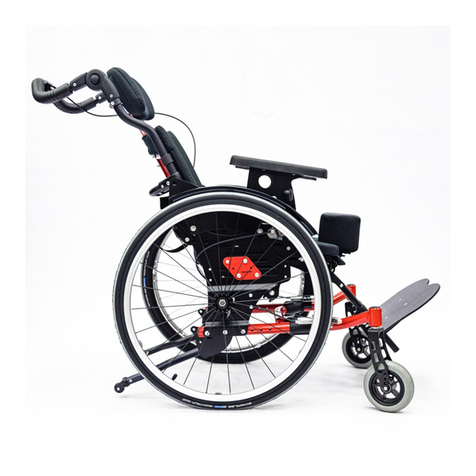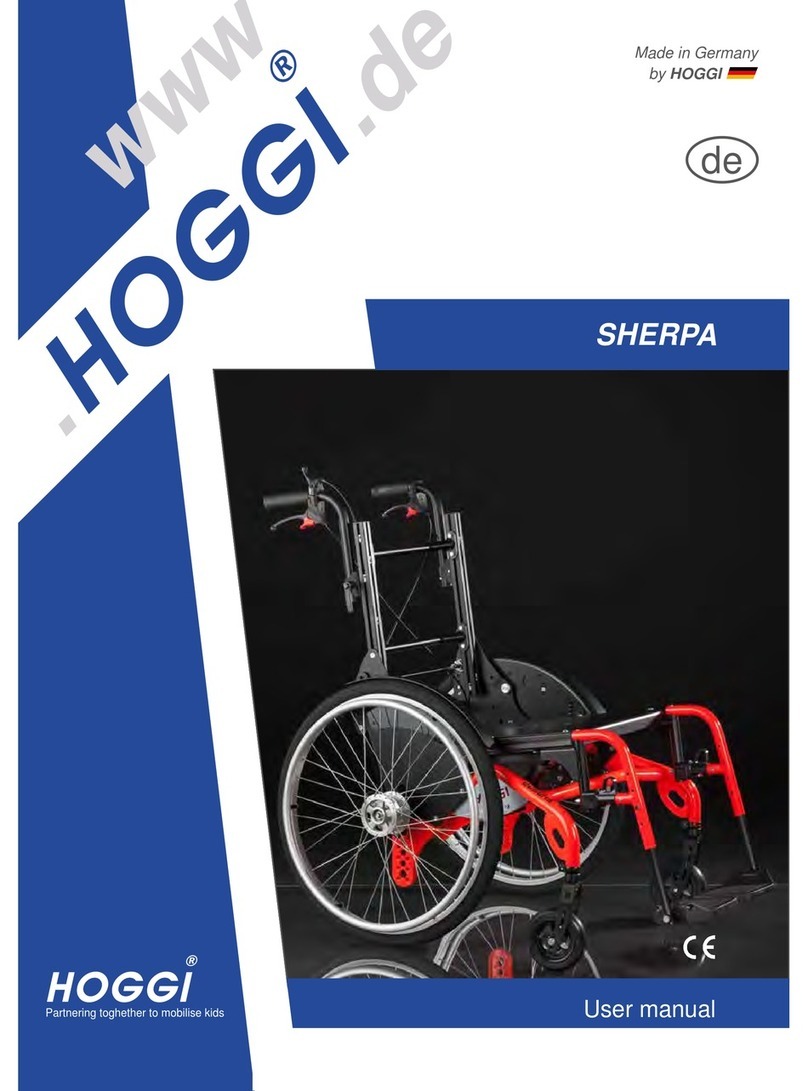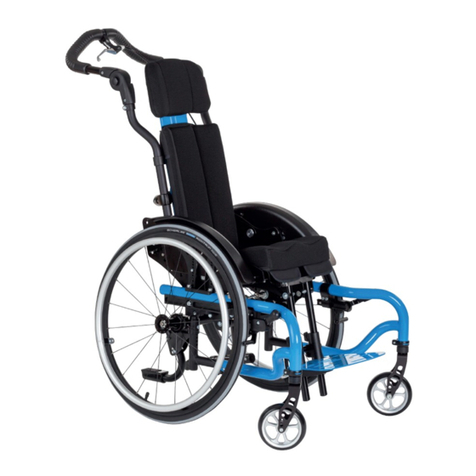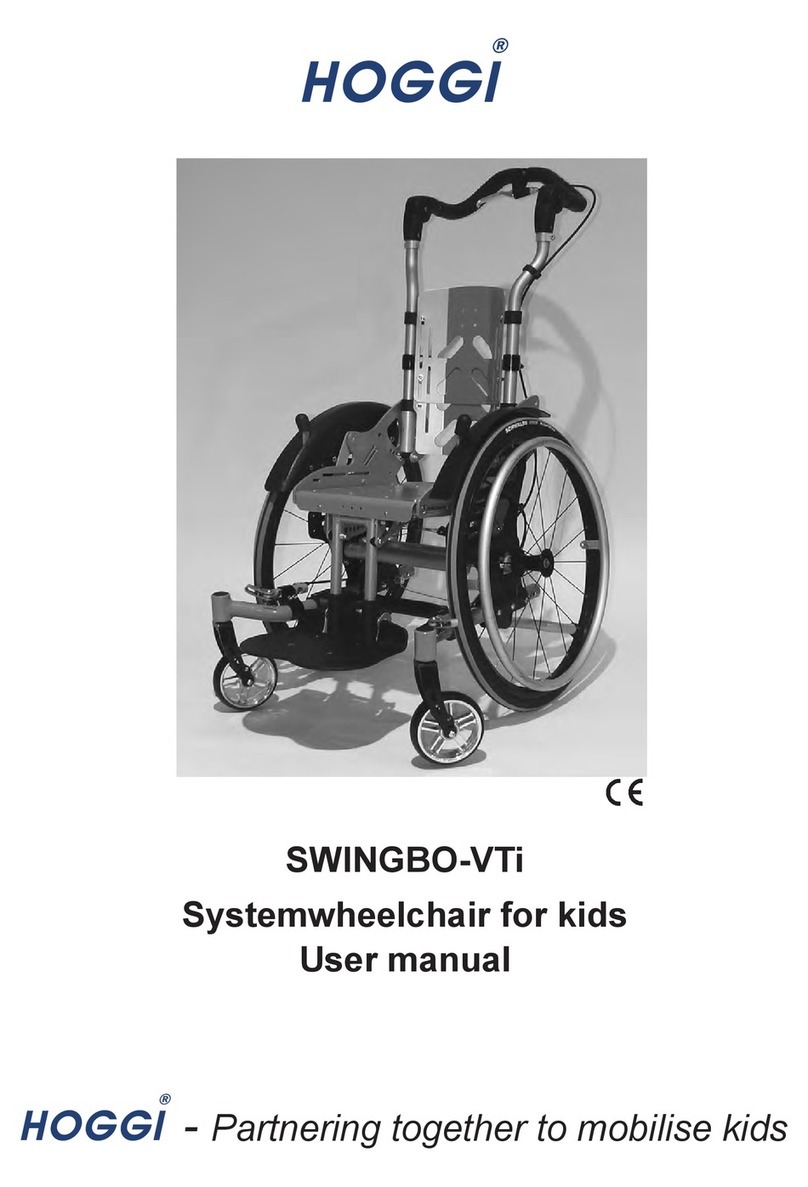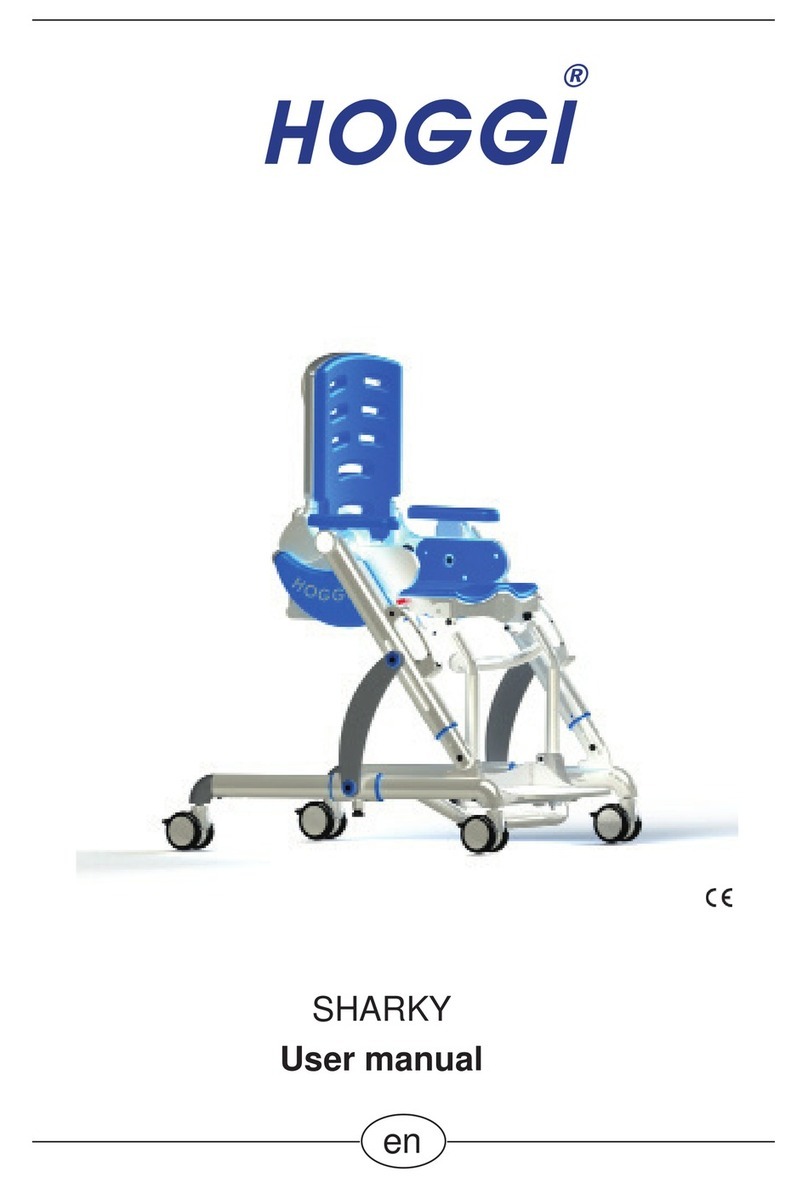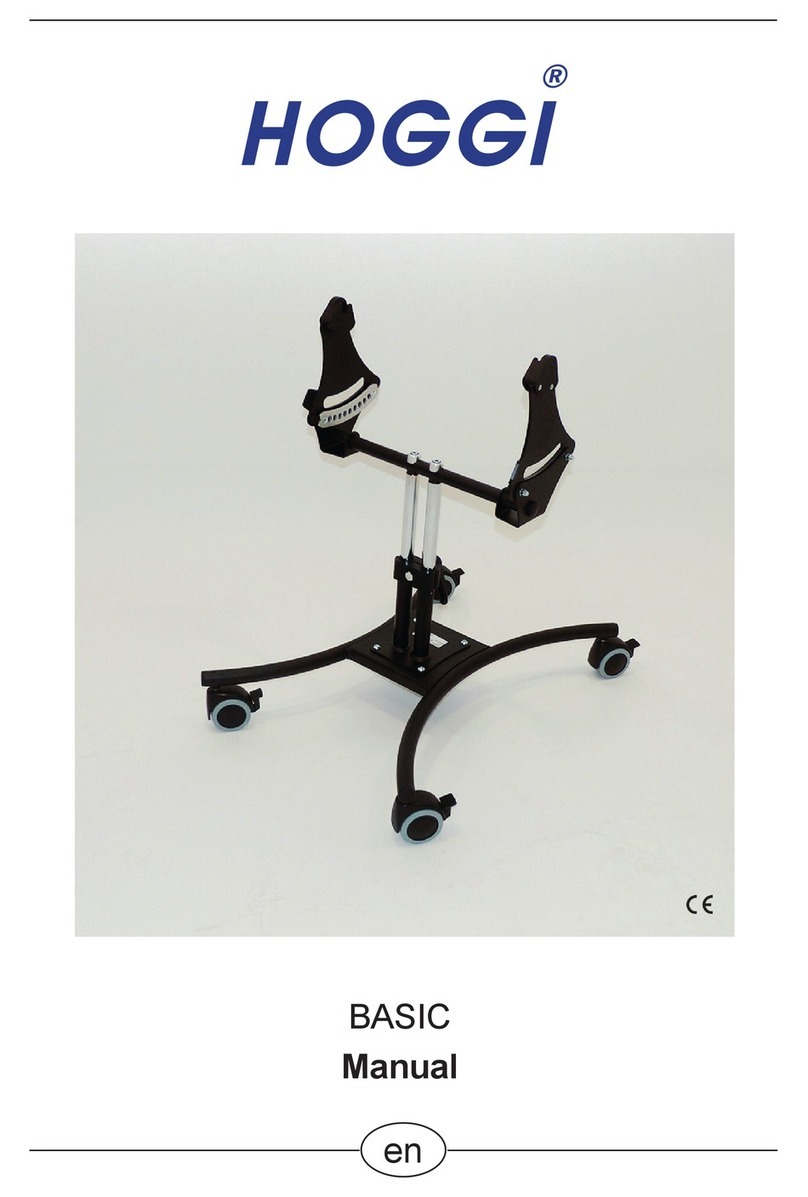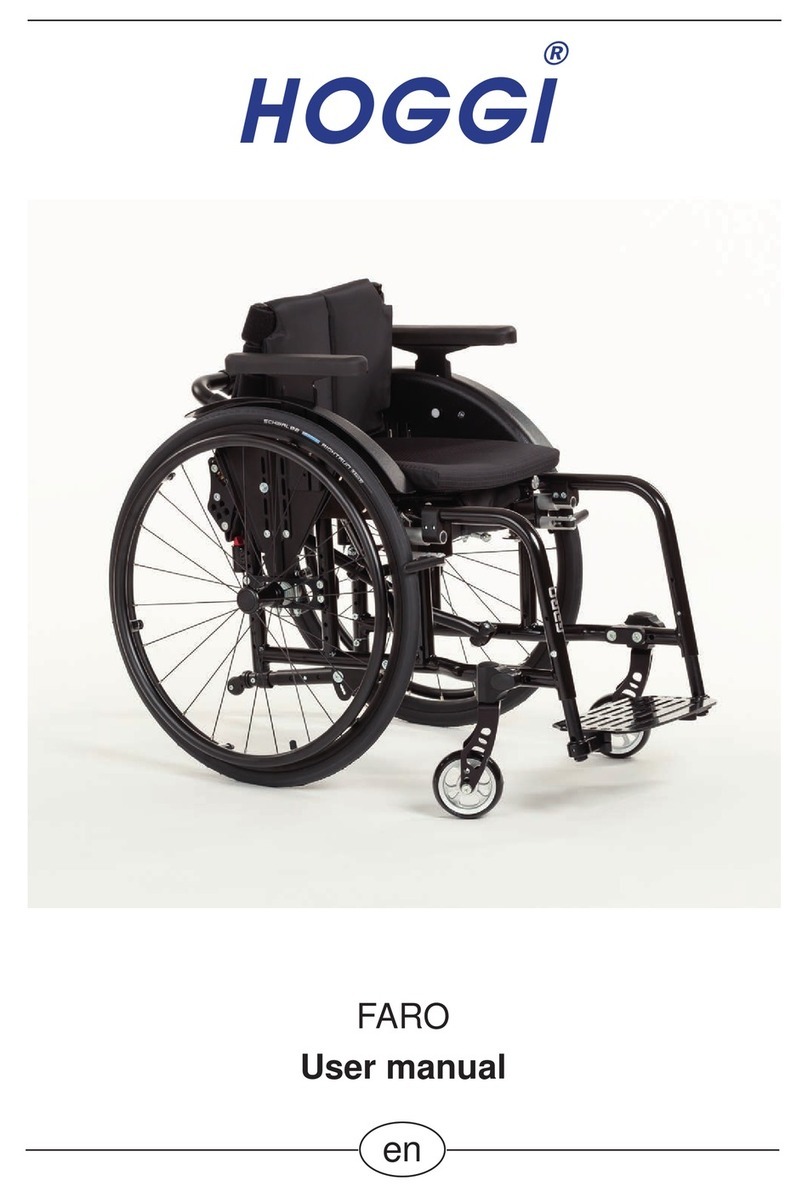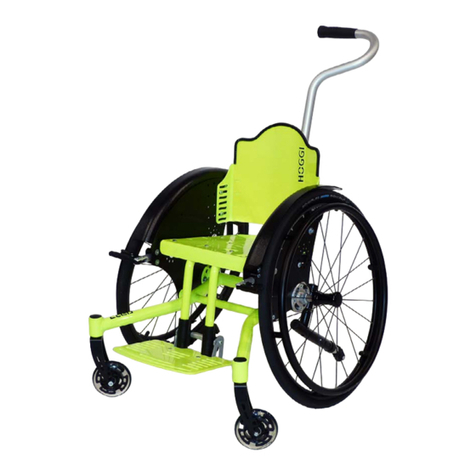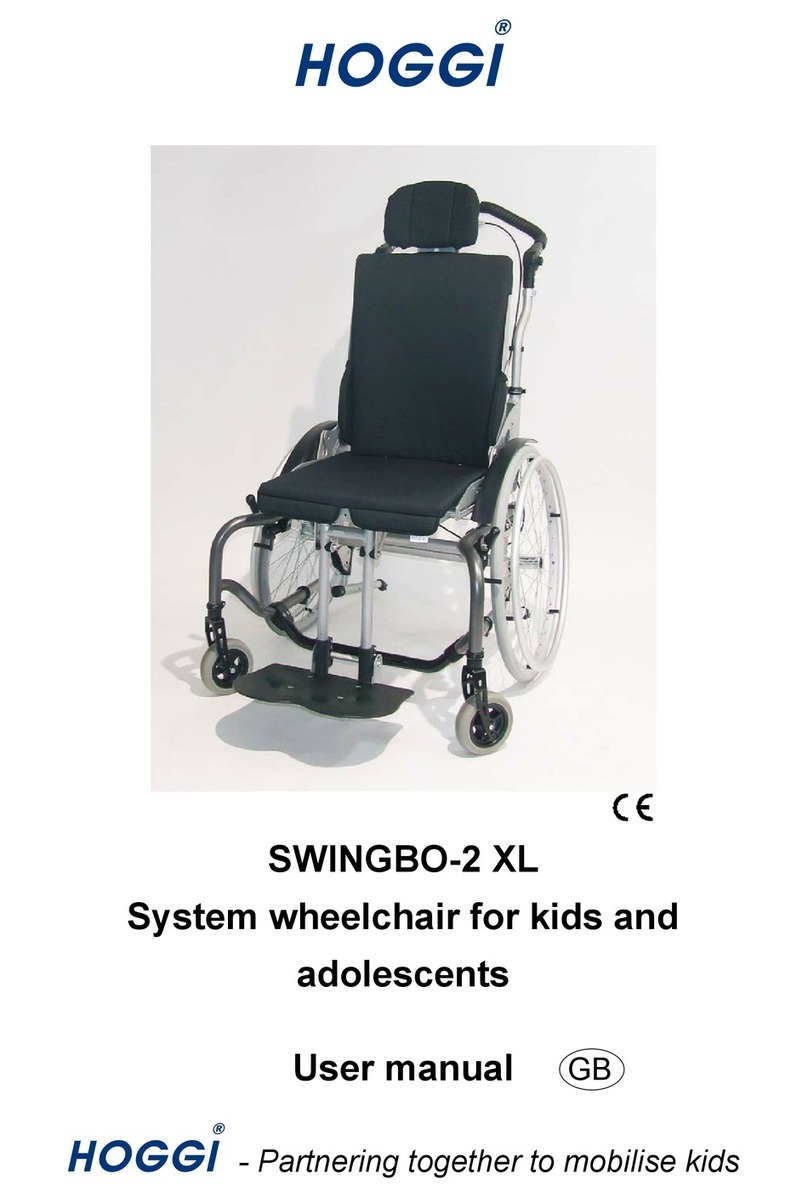
Only drive over steps and thresholds with the chassis tilted onto the rear wheels (upwards -
pulling backwards, downwards - slowly lowering forward).
Stairs may only be climbed with the help of an accompanying person.
If facilities such as ramps, lifting platforms or elevators are available, these must be used. If
facilities such as ramps etc. are missing, the obstacle must be overcome by carrying two
helpers.
To lift the rehab buggy, only grasp firmly welded or firmly screwed frame parts that are fixed
to the base of the back.
Always lean the occupant's upper body far forward when negotiating inclines, obstacles on
inclines and ramps.
Do not drive down slopes without braking, but at reduced speed. Relieving the load on the
steering wheels by changing the center of gravity can lead to steering wheel flutter.
The folding rehab buggy should only be parked on horizontal, level surfaces. Should it ever
be unavoidable to park it on an incline, please make sure that the seat is brought into an
upright position. When the backrest is in the unloaded position, there is a risk of tipping
backwards on inclines.
Always apply the brakes before leaving the folding rehab buggy or before getting in and out.
- Footboards may not be used for getting in and out.
- Only step on the footboard with shoes.
-
Depending on the setting of the footboard and the geometry of the folding rehab buggy,
there is a risk of tipping forward when stepping over the footboard. It is essential that you
practice the first steps with the child with an assistant who secures the rehab folding
buggy and modify the footrest and seat height settings if there is a tendency to tip over.
You can also increase the safety of the folding rehab buggy when getting in over the
footboard by turning the steering wheel fork forwards (this increases the wheelbase).
The general driving behavior and the effectiveness of the parking brakes depend on the air
pressure. With properly inflated wheels, your folding rehab buggy can be maneuvered much
easier and better. Before starting your journey, ensure that the air pressure of the tires used
is correct. The correct air pressure is printed on the wheel cover.
All brakes that act on the tires do not serve as service brakes, but are only designed as
parking brakes. The parking brakes must not be used as driving brakes. Suddenly stopping
the rehab buggy can lead to falls in extreme cases.
Make sure that packaging is kept away from children. There is a risk of suffocation when
using plastic packaging.
Use your folding rehab buggy only as intended. For example, avoid driving against an
obstacle (step, curb) without braking.
Avoid jumping off heels
